UNOPS
Taxonomy Term List
Global Ecosystems Based Adaptation in Mountains Programme
Human wellbeing and livelihoods cannot be sustained without healthy ecosystems. Mountain ecosystems are particularly important, in that they maintain rich ecological processes and provide essential goods and services, especially water, not only to mountain people, but also to downstream lowlands where demand from population centers, agriculture and industry is high. These ecosystems, however, face severe threats from unsustainable land use practices (overgrazing and non-conservation agriculture), illegal wood extraction, development of large-scale infrastructure (dams, roads) and unsustainable natural resource projects (hydrocarbons, mining).
Climate change further compounds these threats by increasing levels of exposure to droughts, floods (which in turn results in an increase in landslides) and changes in seasonality. These impacts both undermine the resilience of the mountain ecosystems and increase the vulnerability of the local mountain communities, whose livelihoods and wellbeing depend on their services. Mountain people tend to be among the world’s poorest and most marginalized populations. Not only do many share the disadvantages of rural poverty and ethnic or religious discrimination. They also face additional challenges to subsistence brought about by elevation, rough topography and severe climate.
Through the global Ecosystems-based Adaptation (EBA) in Mountains Programme, UNDP, UNEP and IUCN, with funding from the German Government, used sustainable management, conservation and restoration of ecosystems, as part of an overall adaptation strategy, to reduce the vulnerability and enhance the resilience of select fragile mountain ecosystems and their local communities to climate change impacts.
Photos provided by: UNDP Peru, Carlos Diaz Huertas and Adriana Kato, UNDP Nepal, Tine Rossing, Andrea Egan, UNDP Uganda, Ed Barrows and James Leslie.

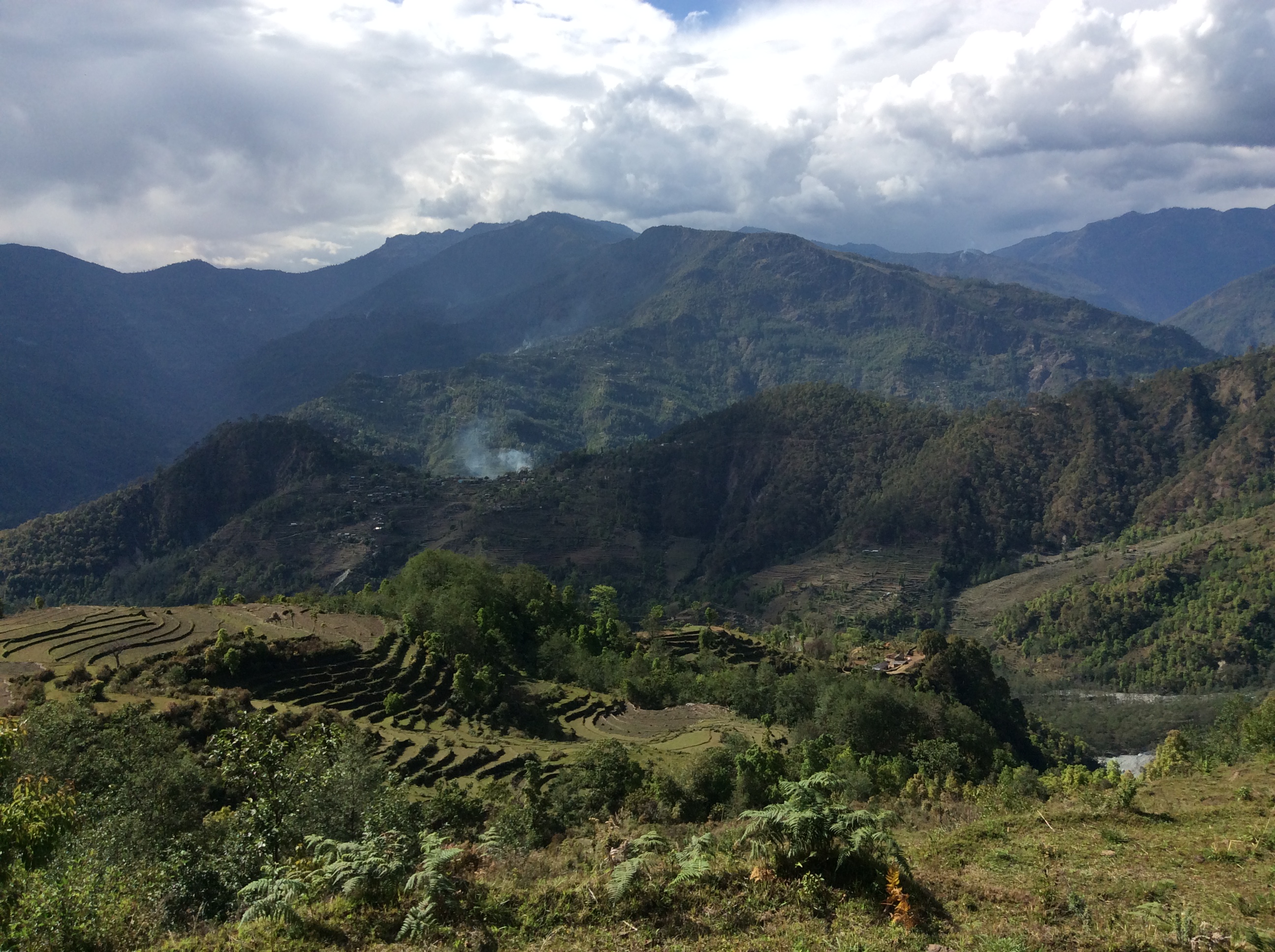


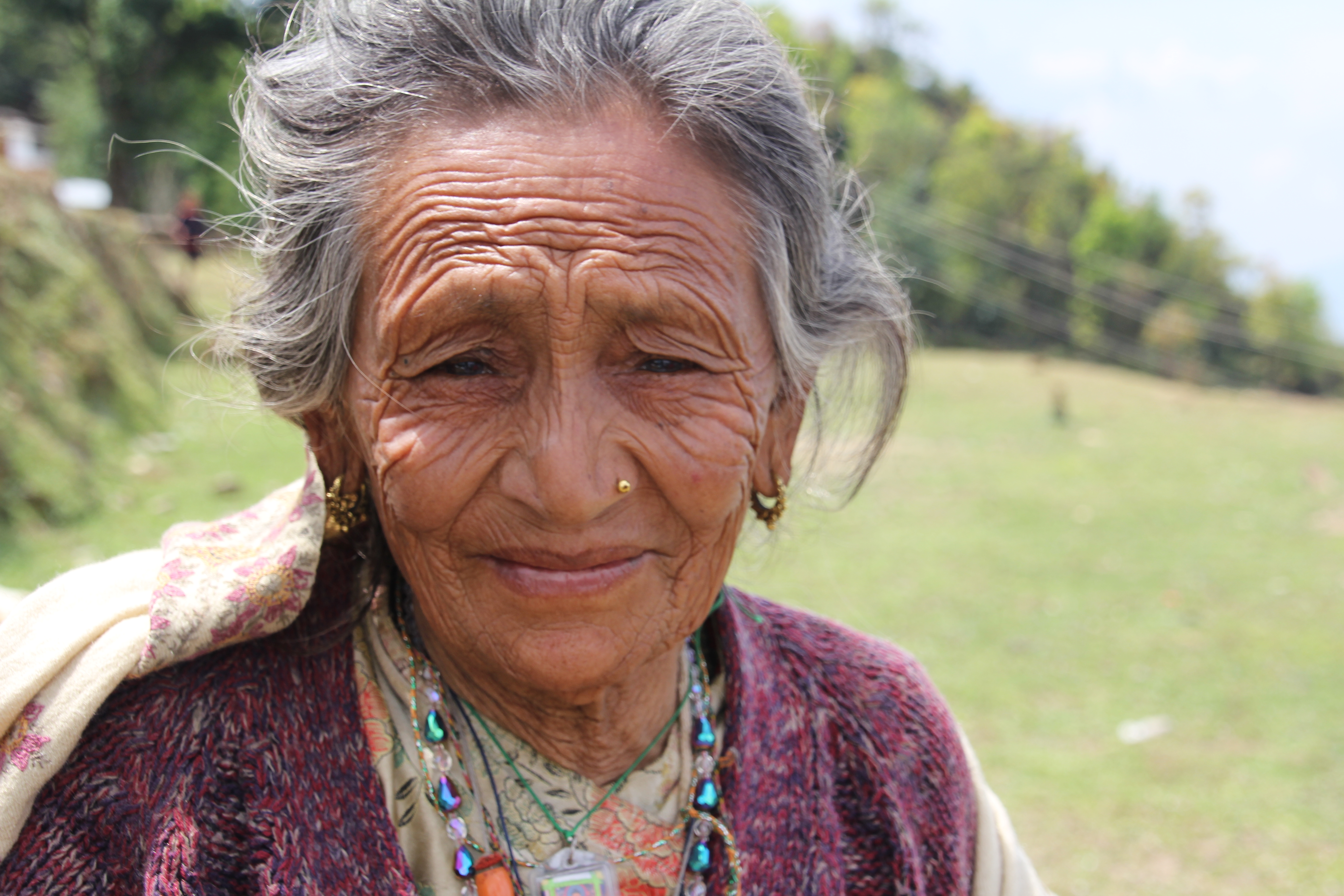


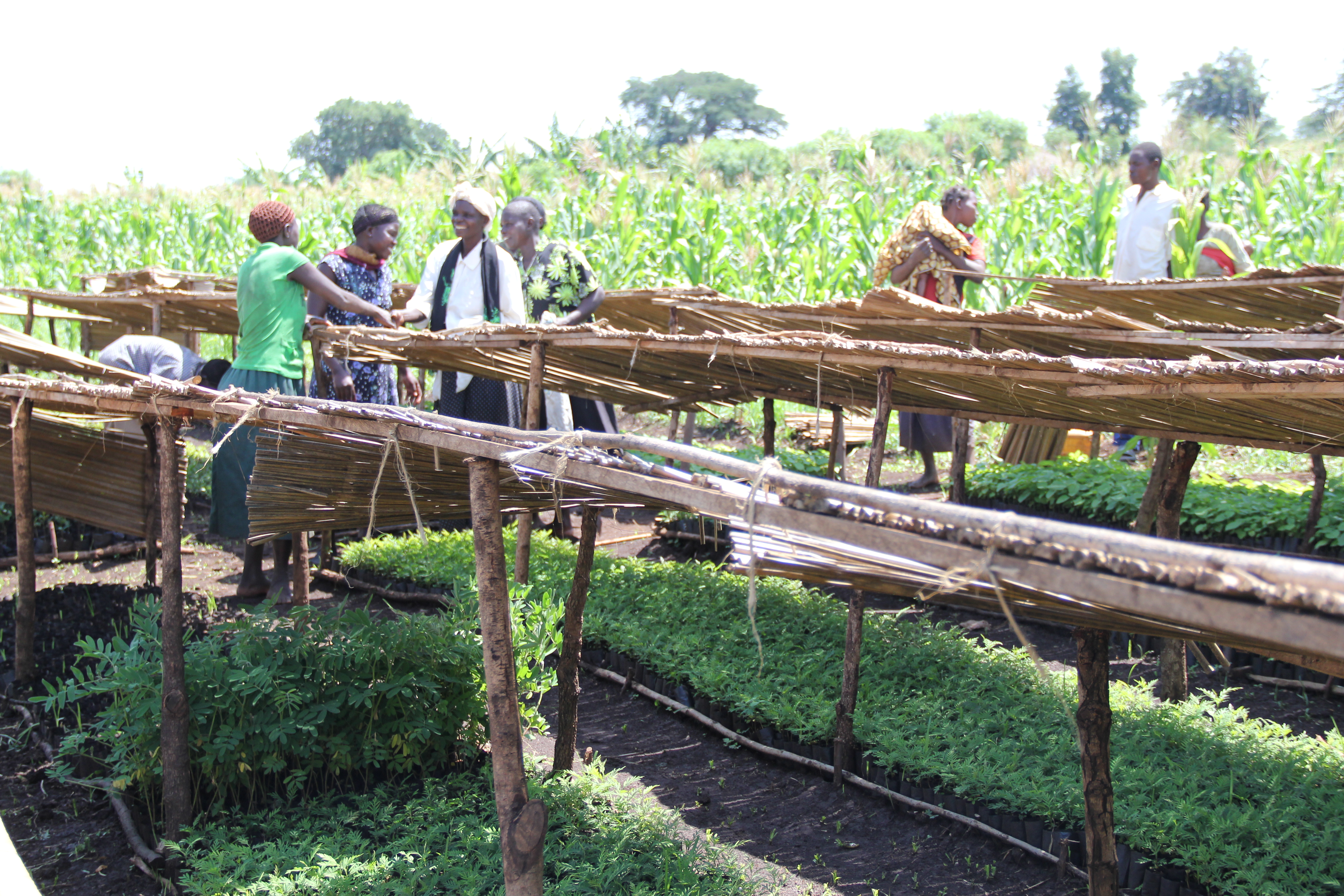
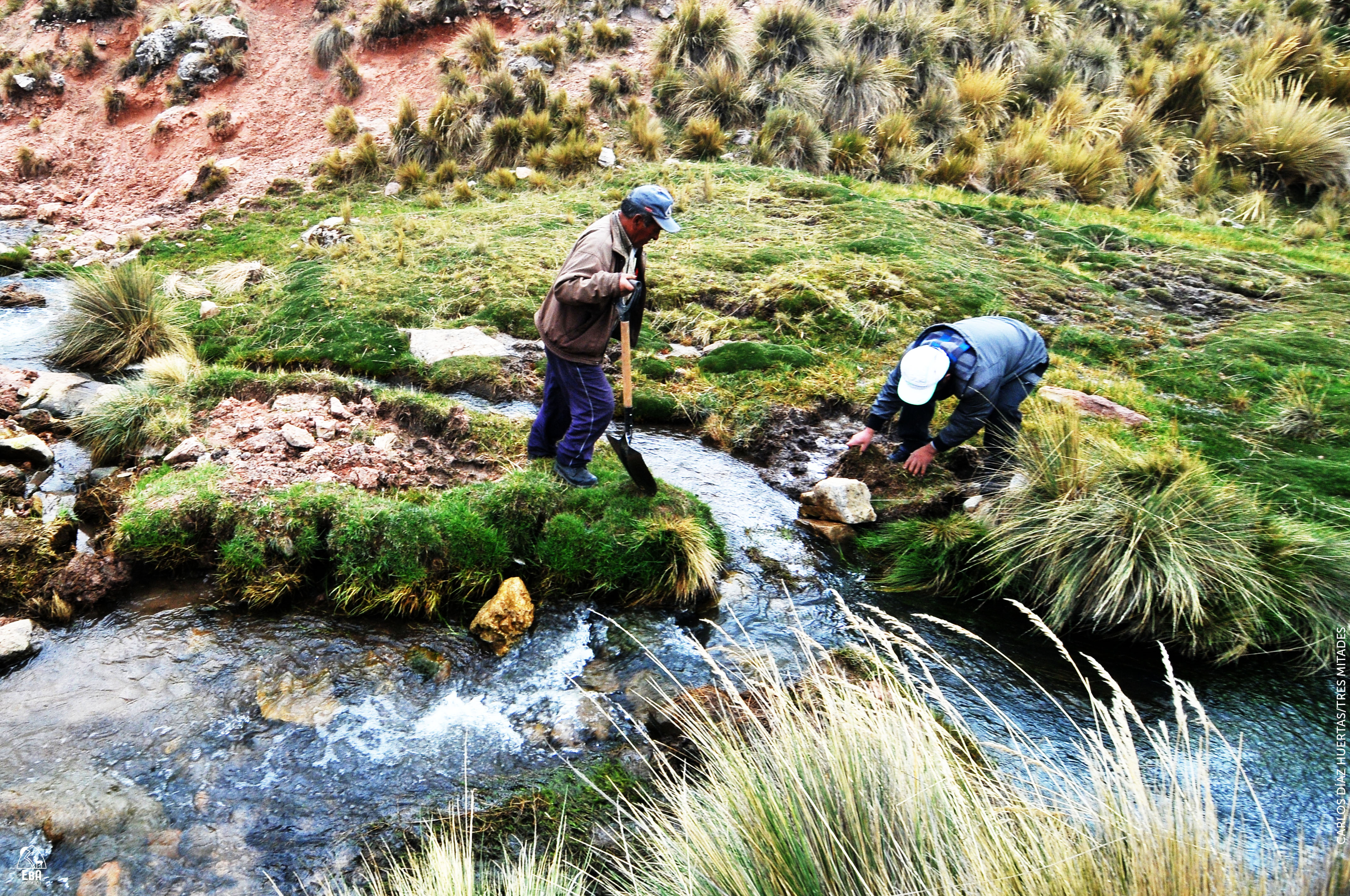

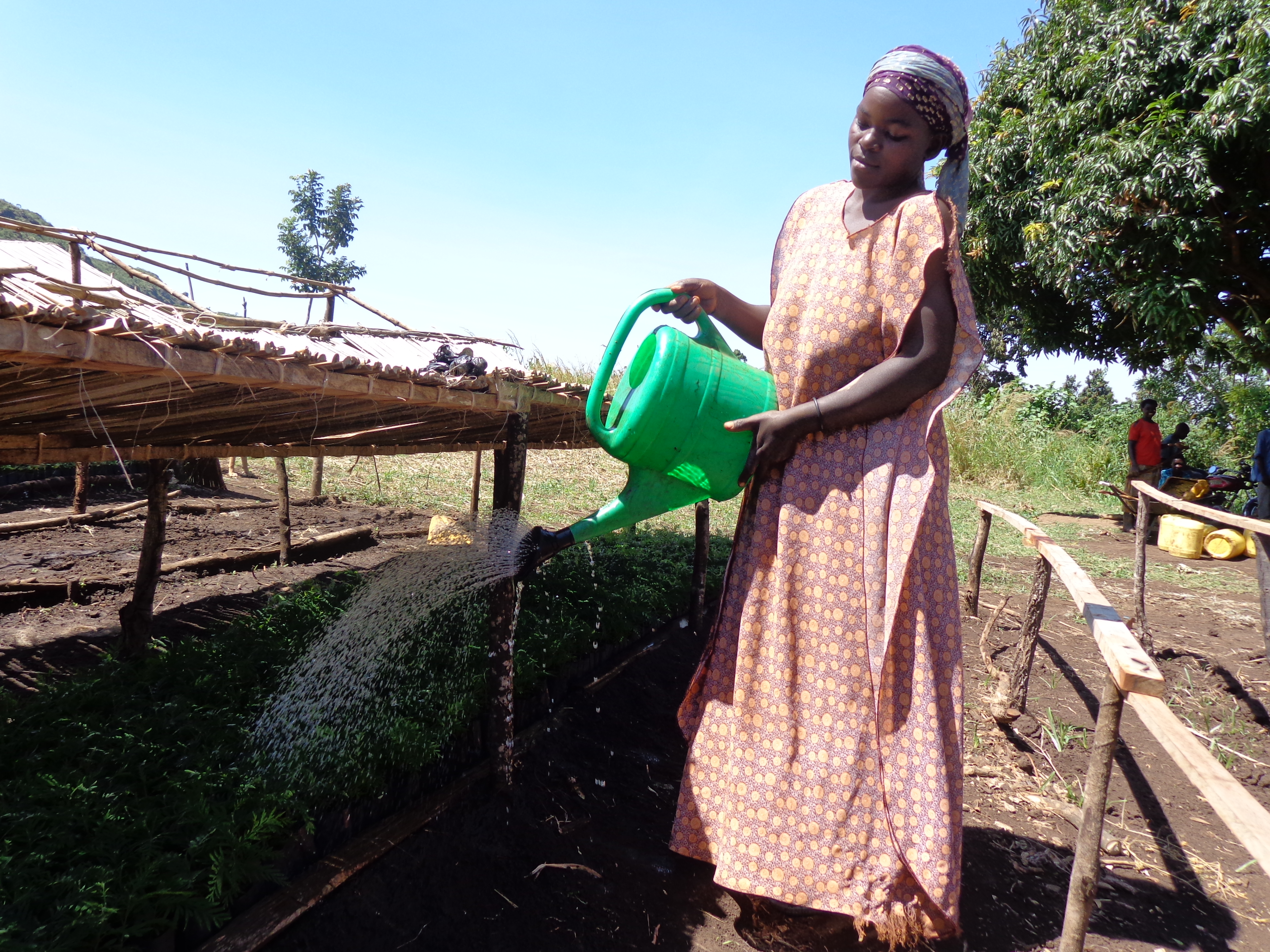
Assessments and Background Documents
Making the Case for Ecosystem-based Adaptation: The Global Mountain EbA Programme in Nepal, Peru and Uganda.
Project Brief / Fact Sheet
Learning Brief 4 - Making the case for policy change and financing for Ecosystem-based Adaptation
Learning Brief 3 - Making the economic case for Ecosystem-based Adaptation
Learning Brief 2 - Generating multiple benefits from Ecosystem-based Adaptation in Mountain Ecosystems
Learning Brief 1 - Introduction to Ecosystem-based Adaptation: A nature-based response to climate change
Training & Tools
UNEP-WCMC (2015) VIA Guidance Document: Executive Summary - RU
UNEP-WCMC (2015) VIA Guidance Document: Executive Summary - PT
UNEP-WCMC (2015) VIA Guidance Document: Executive Summary - SP
UNEP-WCMC (2015) VIA Guidance Document: Executive Summary - FR
Brochures, Posters, Communications Products
Mt EbA Programme (2014) Programme Brochure: Ecosystem-based Adaptation: Adapting to Climate Change in Mountain Ecosystems
UNEP (2010) Making the Case for Ecosystem-based Adaptation (Mt EbA Programme)
The Ecosystems-based Adaptation (EbA) in Mountains Programme is a global partnership jointly implemented by UNDP, UNEP and IUCN from 2011-2015, with funding from the Germany’s Federal Ministry for the Environment, Nature Conservation, Building and Nuclear Safety (BMUB). While global in scope, Uganda, Nepal and Peru were selected as pilot countries, due to their significant vulnerability to climate change, coupled with their endowment of fragile mountain ecosystems upon which a multitude of communities and economic activities depend.
The overarching Programme goal is to strengthen capacities of the involved governments and local communities to reduce vulnerability and increase resilience to the effects of climate change using EbA measures in targeted mountain ecosystems.
Expected programme results include:
- New and field tested methodologies and decision-making tools for EbA, including Vulnerability & Impact Assessments;
- Monitoring and Evaluation centered on ecosystem resilience; and
- Capacities and knowledge of all involved stakeholders (national, district and local level government, local communities and civil society organizations) will be enhanced for planning and implementing both early action “No Regrets” and longer-term EbA measures through pilot activities in target mountain ecosystems.
Based on evidence emerging from these processes, lessons will also be generated on how to use cost-benefit analyses to make an economic case for specific EbA measures. In close collaboration with key governments agencies, evidence and lessons will be generated on how to mainstream EbA into broader district and national policy and financing frameworks. These lessons can be scaled-up and shared as policy examples at regional and global levels beyond the three pilot countries. Overall, the resilience to climate change of targeted mountain ecosystems and their local custodians will be enhanced.
Outcome 1: Methodologies and tools for EbA decision making developed. The application of appropriate scientific methodologies and tools to assist decision makers on the effectiveness of the interventions is a critical ingredient of successful EbA approaches. In each pilot country, this outcome will finance a process that will assess, evaluate and develop appropriate methodologies for use in informing project adaptation actions. Additional results that will be generated include development of project baselines as well as comprehensive monitoring and evaluation mechanisms to monitor programme impacts. Indicators will be developed to specifically measure impacts related to ecosystem functioning and adaptive capacity.
Outcome 2: EbA methodologies and tools applied at ecosystem level. This outcome will finance the development of a capacity building approach that, in turn, will be used to apply the methodologies and tools developed under Outcome 1. In order to ensure sustainability in the use of the tools as well as ensuring that results from the programme are integrated in national processes, relevant stakeholders who were to be involved in the programme will be trained in the use and application of the tools.
Outcome 3: EbA pilot projects implemented in each pilot country and contributing towards ecosystem resilience and reduction of livelihood vulnerability in the face of climate change impacts. A number of EbA activities will be identified and selected for implementation based on the outputs of outcomes 1 and 2. In addition, 1) institutional roles and responsibilities for EbA will be agreed to by different stakeholders at all levels; 2) Institutional capacity of local governments and other key national institutions to plan, monitor and enforce EbA will be enhanced; 3) pilot projects focusing on water resources management and enhancement of soil conservation measures will be implemented; 4) market opportunities and access will be enhanced; and 5) lessons learned from pilot projects will be captured and disseminated.
Outcome 4: Business case for EbA at the local and national levels developed. To make an economic case for EbA, the project will identify and apply the best methods and practice for socio-economic evaluation of adaptation options. This will provide an economic justification for support from relevant government institutions for the use of EbA as a climate risk management strategy. To this end, i) an enabling environment for scaling-up EbA at national level will be created; and ii) information and capacities of key government stakeholders will be enhanced so as to integrate EBA into national development planning processes and climate change policies and strategies.
Outcome 5:New learning and knowledge on EbA generated. In early 2014, the scope of the Programme was expanded to include a new Learning and Knowledge Component. These new activities will strengthen learning about EbA at various levels namely 1) site level – i.e. the three pilot sites in Nor Yauyos-Cochas, Mount Elgon and Panchase – 2) country level (Peru, Uganda and Nepal), and 3) beyond (inter-country, regional and global levels). Systematization of generated information and learning wil be used by partners to generate new science, insights and messages that can influence policy and practice on EBA in mountain ecosystems and beyond. The application of methodologies and tools, combined with implementation of pilot activities, will enable the Programme to shorten the learning curve for local and national institutions, and fast-track the transfer of knowledge and experience in building ecosystem and social resilience to climate change.
The EbA Mountain Ecosystems Programme is working in designated project sites in Nepal, Peru, and Uganda.
Africa Adaptation Programme
The Africa Adaptation Programme was launched in 2008 by the United Nations Development Programme in partnership with the United Nations Industrial Development Organization (UNIDO), the United Nations Children’s Fund (UNICEF) and the World Food Programme (WFP) and with US$92.1 million support from the Government of Japan. The AAP was established under the Japan-UNDP Joint Framework for Building Partnership to Address Climate Change in Africa, which was founded at the Fourth Tokyo International Conference on African Development (TICAD) in May 2008.
Over a 3 year period, concluding at the end of 2012, AAP instituted transformational changes in the 20 African countries in the areas of 1) long-term planning; 2) leadership and institutional capacity; 3) climate-resilient policies and measures; 4) innovative finance; and 5) knowledge generation and sharing. AAP’s support helped enhance the adaptive capacity of the AAP countries, promote early adaptation action and lay the foundation for long-term investment to increase resilience to climate change across the African continent.
The 20 AAP countries were: Burkina Faso, Cameroon, Congo, Ethiopia, Gabon, Ghana, Kenya, Lesotho, Malawi, Mauritius, Mozambique, Morocco, Namibia, Niger, Nigeria, Rwanda, Sao Tome Principe, Senegal, Tanzania, and Tunisia.
Africa is particularly vulnerable to climate change. It will exacerbate the economic, political and humanitarian stresses that countries in the region already face, and greatly reduce their capacity to eradicate extreme poverty. The poorest segments of society will be the most severely affected because they are also the least able to adapt. Responding to the threat of climate change will require concerted action on an unprecedented scale. Systematic action will be required across all levels of development planning and implementation (regional, national, sub-national, and local) if development in a number of countries is not to be reversed.
Some African countries have identified key vulnerabilities and priority adaptation measures, and others have initiated demonstration adaptation projects. However, countries continue to face a number of challenges including the following: (i) adaptation initiatives are limited in scope and scale, and their impacts are neither cohesive nor sustainable; (ii) institutional capacities, relationships, policies and practices to assess and manage climate change risks are not developed sufficiently to create an enabling environment, with corresponding political and social champions to support the formulation and implementation of efficient solutions to a problem that has complex multi-sectoral effects; (iii) limited knowledge of the most appropriate adaptation policies and measures hinders countries from preparing themselves with the necessary institutional capacities to support climate risk management; (iv) limited financing options to sustain scaled-up adaptation remains a constraint; and (v) it is difficult for countries to learn from each other about their experiences with different approaches to adaptation.
During the three years of its implementation (2010-2012), AAP laid the groundwork for an ongoing, dynamic adaptation process in harmony with each country’s social, environmental and economic priorities. In all 20 countries, AAP has nourished an environment in which decisions and activities in support of adaptation can be evidence-based, strategic and appropriate to the goals of sustainable development, resulting in long-term investment to increase resilience to climate change.
Strengthening Long-Term Planning Mechanisms
AAP’s Data and Information Management Component (DIMC) assisted countries to develop the infrastructure and capabilities needed to access, analyse and apply climate data and information for decision-making. Overall, over 10,000 people were trained in climate data analysis under AAP’s DIMC. AAP’s support under DIMC helped increase countries’ capacity to support vulnerability and risk assessments and use climate data and information to integrate adaptation into national development planning.
Building Institutional and Leadership Capacity
AAP assisted in enhancing professional leadership capacity and institutional effectiveness in countries by increasing awareness of climate change issues, developing multi-stakeholder approaches and implementing national adaptation strategies that address the needs of men and women equally. For example, under AAP, Kenya established a National Climate Change Secretariat to coordinate the different climate change focal points in key government ministries. Through this multi-ministerial coordination, Kenya has facilitated the National Climate Change Response Strategy and ensured adaptation interventions take a multi-sectoral approach.
Implementing Climate-Resilient Policies and Measures
AAP provided assistance to countries to implement policy measures that protect climate sensitive sectors and encourage private sector investment in adaptation, such as adaptation pilot projects and national climate change strategies. For example, Nigeria, with the support of AAP, adopted a National Policy on Climate Change and Response Strategy, which will ensure a coordinated approach to addressing climate change.
Innovative Finance
Under AAP, innovative financing options to meet national adaptation costs were expanded at the local, national, sub-regional and regional levels. For example, AAP supported Morocco to expand public-private partnerships to mobilise funds for future climate change projects in local communities. Through a public-private partnership developed through AAP, a solar lighting project was completed in a rural community. Additionally, AAP trained stakeholders to undertake cost-benefit analyses of adaptation options.
Generating and Sharing Knowledge
Through AAP, knowledge on adjusting national development processes to fully incorporate climate change risks and opportunity was generated and shared across all levels across all 20 countries. For example, the production and broadcast of television and radio segments (e.g. Burkina Faso, Mauritius, Namibia, and Tunisia) and documentaries (e.g. Cameroon, Kenya, Morocco, Rwanda, Senegal and Tanzania) effectively shared information and concerns on climate change adaptation.
Climate Change Adaptation in the Cundinamarca Department of Colombia (TACC)
The Down to Earth: Territorial Approach to Climate Change (TACC) is part of a partnership between the United Nations and sub-national governments for fostering climate friendly development at the sub-national level. This partnership is a collaborative effort involving UNDP, UNEP and eight associations of regions.
In Colombia the TACC project is working in Cundinamarca to support the integration of climate change adaptation and mitigation measures into sustainable development planning and programming. The project aims to support capacity building of national and regional authorities in order to integrate climate change into territorial planning and programming, thereby developing, through a capacity building process, a sub-national Level Low Emissions Climate Change Resilience Development Strategy (LECRDS).
In Colombia, project staff have established the partnership and coordination structures referenced in Step 1: Developing a multi-stakeholder planning process. Now they are working on Step 2: Climate change physical impact and vulnerability scenarios with the preparation of climate scenarios underway. Step 3 will identify strategic options leading to low emission climate-resilient development trajectories, via a case study at the municipal level. The project is currently collaborating in the formulation of the National Climate Change Adaptation Plan, in service of Step 4: Identify Policies and Financing options to implement priority Climate Change Actions. Finally, Step 5 will result in the preparation of a low emission climate resilient development roadmap.
Click here for more information on the Overall TACC Project.
Document
Territorial Approach to Climate Change (TACC) 2012 Update
Assessments and Background Documents
Colombia- Second National Communication 2010 English (Executive Summary)
ProDocs
Project Brief / Fact Sheet
Project Brief: Territorial Approach to Climate change in the Capital Region of Colombia
The Down to Earth: Territorial Approach to Climate Change (TACC) project aims to assist regional and local governments in developing countries in:
- Developing integrated climate change strategies and action plans to assess development options that are robust enough to withstand different future climatic conditions.
- Strengthening capacity of sub‐national authorities to integrate climate change into sustainable development planning and programming.
- Identifying no regrets/negative costs/low‐cost adaptation and mitigation measures that promote long‐ term sustainability and poverty reduction.
- Enhancing the capacity of regional and local government to enact regulatory measures, as well as to take advantage of new sources of environmental finance, to implement these no regrets/negative cost/low‐cost options.
UNDP provides support to the regional government and several national institutions to develop the Integrated Territorial Climate Plan for the Capital Region of Colombia (Bogota District and the Department of Cundinamarca).
The project aims to support capacity building of national and regional authorities in order to integrate climate change into territorial planning and programming, thereby developing, through a capacity building process, a sub-national Level Low Emissions Climate Change Resilience Development Strategy (LECRDS).
Main activities to date
Step 1: Develop a multi-stakeholders planning process
Partnership engagement and coordination structure: Project Coordination Unit established and 11 public institutions engaged in the project Steering Committee. 6 technical working groups have been set, relying on the project’s capacity development goal. These groups are: i) Analysis of regional dynamics; ii) Climate change scenarios and analysis of climate variability; iii) GHG inventory; iv) Vulnerability Assessment; v) Territorial planning; vi) Education strategy and knowledge management. About 130 professionals from partner institutions are engaged in these different groups. In this first phase of the process, it was considered crucial to strengthen inter-institutional relations. An advisory committee comprised of multi-stakeholders will be established in March 2012.
Step 2: Prepare Climate Change Profiles and Vulnerability Scenarios.
Climate scenarios downscaled at a sub-national level are being developed, with the assistance of Columbia University/NASA, using the Change Factor Method. Periods: 2030, 2040, 2070, 2100 and gas emissions scenarios: A2, A1B, B1. For February 2012, a climate variability analysis and short-term projections (ENSO phenomenon) will also be available. A particular territorial vulnerability assessment model has been developed and implementation is underway, climate related disaster records are included in the analysis. For the GHG emissions inventory, information on 5 main emitting sectors is being collected, according to the IPCC guidelines (1996, 2006).
Step 3: Identify Strategic Options Leading to Low Emissions Climate –Resilient Development Trajectories.
The construction of the regional climate change education strategy has started. The strategy aims to raise awareness among the public and decision makers about development approaches needed to ensure territorial security on the face of climate change. Key values were identified: identity, responsibility, equity and solidarity. Regarding the integration of climate related risk management in territorial planning instruments, a set of guidelines will be identified and put into practice through a case study at a municipal level.
Step 4: Identify Policies and Financing options to implement priority Climate Change Actions.
A regional dynamics analysis will help better understand the opportunities and challenges to implement strategic mitigation and adaptation options. Efforts have also been focused in positioning the project at a regional and national level, seeking to link the project results and lessons learned with national methodologies and guidelines that are being developed by the authorities. The project is currently collaborating with DNP and MAVDT in the formulation of the National Climate Change Adaptation Plan.
Step 5: Prepare Low Emission Climate Resilient Development Roadmap.
Main activities (as of September 2011)
Step 1: Develop a multi-stakeholders planning process
Partnership engagement and coordination structure: Project Coordination Unit established and 11 public institutions engaged in the project Steering Committee. 6 technical working groups have been set, relying on the project’s capacity development goal. These groups are: i) Analysis of regional dynamics; ii) Climate change scenarios and analysis of climate variability; iii) GHG inventory; iv) Vulnerability Assessment; v) Territorial planning; vi) Education strategy and knowledge management. About 130 professionals from partner institutions are engaged in these different groups. In this first phase of the process, it was considered crucial to strengthen inter-institutional relations. An advisory committee comprised of multi-stakeholders will be established in March 2012.
Step 2: Prepare Climate Change Profiles and Vulnerability Scenarios.
Climate scenarios downscaled at a sub-national level are being developed, with the assistance of Columbia University/NASA, using the Change Factor Method. Periods: 2030, 2040, 2070, 2100 and gas emissions scenarios: A2, A1B, B1. For February 2012, a climate variability analysis and short-term projections (ENSO phenomenon) will also be available. A particular territorial vulnerability assessment model has been developed and implementation is underway, climate related disaster records are included in the analysis. For the GHG emissions inventory, information on 5 main emitting sectors is being collected, according to the IPCC guidelines (1996, 2006).
Step 3: Identify Strategic Options Leading to Low Emissions Climate –Resilient Development Trajectories.
The construction of the regional climate change education strategy has started. The strategy aims to raise awareness among the public and decision makers about development approaches needed to ensure territorial security on the face of climate change. Key values were identified: identity, responsibility, equity and solidarity. Regarding the integration of climate related risk management in territorial planning instruments, a set of guidelines will be identified and put into practice through a case study at a municipal level.
Step 4: Identify Policies and Financing options to implement priority Climate Change Actions.
A regional dynamics analysis will help better understand the opportunities and challenges to implement strategic mitigation and adaptation options. Efforts have also been focused in positioning the project at a regional and national level, seeking to link the project results and lessons learned with national methodologies and guidelines that are being developed by the authorities. The project is currently collaborating with DNP and MAVDT in the formulation of the National Climate Change Adaptation Plan.
Climate Change Adaptation in the Mbale region of Uganda (TACC)
The Down to Earth: Territorial Approach to Climate Change (TACC) is part of a partnership between the United Nations and sub-national governments for fostering climate friendly development at the sub-national level. This partnership is a collaborative effort involving UNDP, UNEP and eight associations of regions.
The TACC Uganda project will support the integration of climate change adaptation and mitigation measures into sustainable development planning and programming in developing countries by:
- Establishing partnership, coordination and participation platform for climate change planning and programming;
- Building capacity to integrate climate change issues into regional development plans and actions;
- Formulating an Integrated Territorial Climate Plan (ITCP) for the Mbale region;
- Formulating a climate change policy and investment package, i.e., a portfolio of CC adaptation and mitigation policy and investment projects to be implemented by combining and sequencing different financial opportunities; and
- Producing and disseminating lessons learned & best practices within and beyond Uganda.'
Click here for more information on the Overall TACC Project.
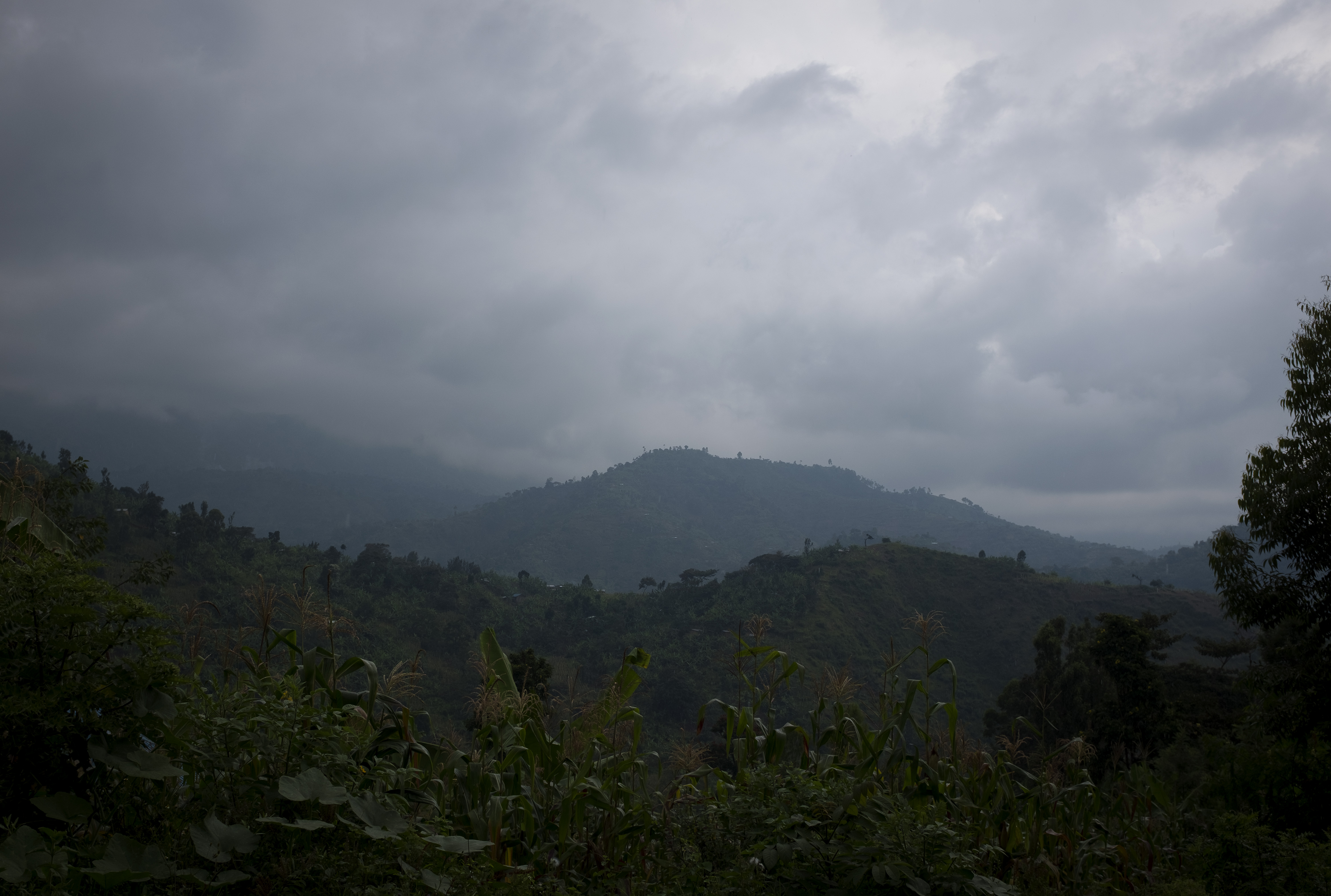

Project Brief / Fact Sheet
TACC Uganda – Policy Brief: Climate Profiles and Climate Change Vulnerability Assessment
TACC Uganda – Policy Brief: Analysis of Adaptation and Mitigation Options
Assessments and Background Documents
TACC Uganda – Climate Profiles and Climate Change Vulnerability Assessment
TACC Uganda – Analysis of Adaptation and Mitigation Options
Document
TACC Uganda - Capacity Development Action Plan to Promote Low Carbon, Climate Change Resilient Development
Territorial Approach to Climate Change (TACC) 2012 Update
ProDocs
The Down to Earth: Territorial Approach to Climate Change (TACC) project aims to assist regional and local governments in developing countries in:
- Developing integrated climate change strategies and action plans to assess development options that are robust enough to withstand different future climatic conditions.
- Strengthening capacity of sub‐national authorities to integrate climate change into sustainable development planning and programming.
- Identifying no regrets/negative costs/low‐cost adaptation and mitigation measures that promote long‐ term sustainability and poverty reduction.
- Enhancing the capacity of regional and local government to enact regulatory measures, as well as to take advantage of new sources of environmental finance, to implement these no regrets/negative cost/low‐cost options.
The overall objective of the project, namely supporting low-carbon and climate change-resilient local development in Uganda, will be achieved by supporting local decision-makers and planners to design integrated climate change (adaptation and mitigation) policies, strategies and formulate concrete actions and investment plans that promote long-term sustainability and poverty reduction in the context of local / regional development.
- Output 1. Partnership, coordination and participation platforms for climate change planning and programming established
- Output 2. Capacity to integrate climate change issues into regional development plans and actions built
- Output 3. Integrated Territorial Climate Plan (ITCP) formulated
- Output 4. Climate change policy and investment package developed
- Output 5. Lessons learned and best practices disseminated




